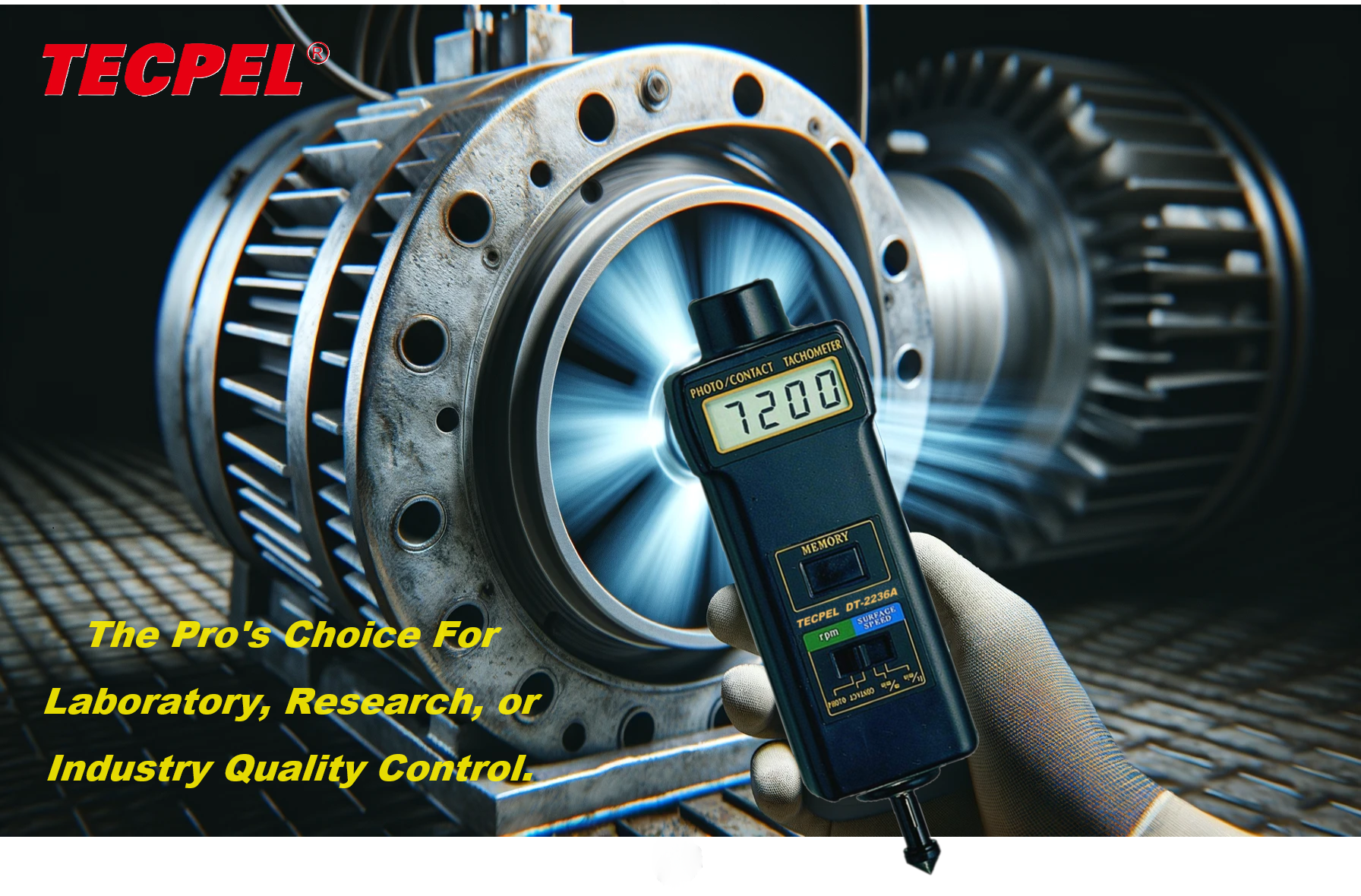Principle of tachometer
How does a contact RPM tachometer measure rotational speed? Principle of tachometer
Using a contact mechanical measurement sensor is a traditional RPM speed measurement method. The speed data collected by the sensor must be converted by electronic analysis inside the instrument. This measurement method is still used, but mostly for measurements at low rotational speeds from 20 to 8000 rpm.
This measurement method relies on contact pressure during the measurement process, and its biggest disadvantage is the loading of motion discontinuities. In addition, the mechanical method of measuring RPM speed is not suitable for small objects. If the rotation rate is too high, instability and shaking may occur, so it needs to be fixed with a tripod.
Non-contact RPM speed measurement principle:
A measurement method using the photoelectric reflection principle (optical RPM speed measurement method). After the infrared rays emitted by the measuring instrument are reflected by the reflective strip fixed on the target to be measured, it carries the relevant speed information. After the measuring instrument receives the reflected wave, it processes and measures the rotational speed data. This measurement method is more advanced, accurate and safer than the mechanical RPM measurement method.
The principle of the stroboscope, also known as the principle of the flash synchronized tachometer, is a method used to measure whether a continuous cyclic moving object is slowly moving or stationary. Its principle is used to study rotating, reciprocating, oscillating or vibrating objects. The rotation of mechanical parts and rotating objects such as bladed fan motors are common examples of observations. The simplest form of observation is to adjust the speed of the strobometer using a rotating disk with evenly spaced holes placed in the line of sight between the observer and the rotating target. The rotational speed is adjusted so that it becomes synchronized with the movement of the observing system, which can be slowed or stopped. The illusion is caused by time differences and persistence of vision, often called the flicker effect. The illumination of the stroboscope can be easily and quickly controlled by adjusting the variable resistor. Makes the flash frequency adjust so that it is equal to or one unit count lower or higher than the object's cycle speed, at which point the rotating object will be seen as stationary, or moving forward or backward, depending on the flash frequency.
Digital Tachometer Keywords
Keywords:RPM (Revolutions Per Minute),Tachometer,Digital display,Sensor,Speed measurement,Engine speed,Optical sensor,Hall-effect sensor
Microcontroller,Automotive technology,Rotation speed,RPM gauge,Electronic tachometer,Pulse counting,Revolution counter,Non-contact measurement,Digital signal processing (DSP)
 Language
Language 中文
中文

















